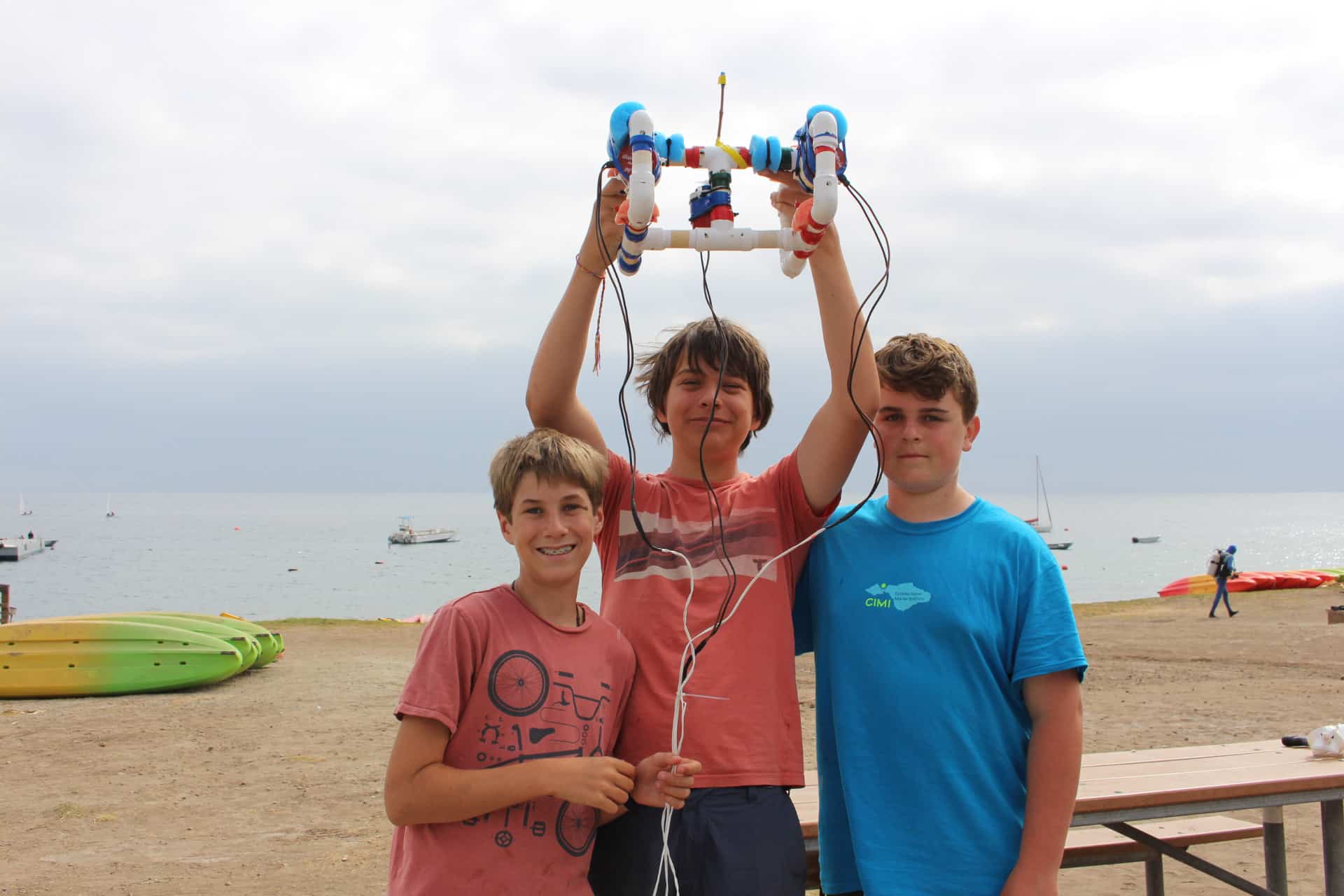
We might not think about salt water all that much, but since it covers 70% of the earth’s surface, it actually has a much greater impact on our daily lives than we realize. Every day here at Catalina Sea Camp, we get to learn more facts about salt water, the ocean, the animals living in it, why it’s so important to study these things, and how cool and fun it can be!
1. Salt Water Carries Electrical Signals To Spark Life
When salt, or sodium chloride, enters water, it breaks apart into individual free-moving particles called ions. You’ve probably seen ions at work and didn’t know it—ever rubbed a balloon against your hair? Those are ions! They carry an electrical charge that allows salt water to conduct electricity. Our bodies use salt water internally to carry electric signals that make our hearts beat and brains think, using ion pumps that move the ions around. We live and breathe thanks to salt water.
2. Humans Can’t Drink Salt Water
Wait, didn’t we just say salt water moves things around in our bodies? Doesn’t that mean we need it? Yes, but the salt in our bodies comes from absorbing nutrients from the food we eat and the water we drink. The concentration of salt in salt water is too high, making it too salty for our bodies to handle, shutting them down.

3. Salt Water Carries Heat Around the Earth
If you’ve traveled across any oceans, you’ve probably heard of The Gulf Stream. It’s a massive warm water current that flows north from the tropical areas of Earth. The saltwater in the ocean drives this current, depending on the levels of salt in the water. In the winter, polar ice caps freeze and the surrounding water becomes saltier (because most of the freshwater has been frozen). Saltwater is heavier than freshwater, so it sinks to the sea floor, stirring the water and pushing this current along, bringing warmer water north.
4. Salt Water Takes Carbon Dioxide Out of The Air
It’s true, the health of the air we breathe is largely thanks to the ocean! Carbon dioxide (CO₂) reacts with the molecules in salt water to form ions that increase the ocean’s acidity. The ocean removes more than 25% of all the CO₂ that humans put into the air.

5. Salt Water Provides Almost Half of the Oxygen on Earth
The majority of this production is from saltwater plankton—drifting plants, algae, and some bacteria that can photosynthesize sunlight into oxygen. Next time you see these plants in the ocean, remember you’re seeing them hard at work making air for you!
6. Saltwater Ecosystems Support 50% Of All Species
Scientists believe that almost 50% of all known species—animals, fish, and more—on Earth live in saltwater ecosystems. There may be millions more species in the oceans that we have not yet discovered.

7. Building Batteries That Use Salt Water Could Solve Energy Problems
Lithium-ion batteries, the most commonly used battery technology, use lithium ions dissolved in a liquid that carries electricity back and forth between the plus and negative sides of a battery. The liquid that battery manufacturers currently use is expensive, can slow the charge of the battery, and can catch fire. Some studies show that salt water could replace this liquid, which would be much safer and cheaper, and easier to make. Given how many batteries we and our kids are around constantly, this is important news!
8. Sir Edmond Halley Was the First Person To Theorize the Origins of the Salt in Salt Water
In 1715, he believed that salt was washed from the ground by rainfall and carried to the sea. He was partially right—salt washes from rocks into the sea, but also comes from hydrothermal vents on the ocean floor. What a truly amazing discovery that was for his time.

9. Brackish Water Is Where Freshwater and Saltwater Meet
Remember how we said there is a high concentration of salt in salt water? The ocean has a bunch of other particles in it too, called dissolved solids. Fresh water has a lower number of dissolved solids, however. When the two different waters meet, they start to mix together. But in big oceans, the two never fully mix. If you look down at one of these spots, called estuaries, you can see a line where the waters collide, and even turn different colors! Or, if you put salt and fresh water in a clear cup, then shake it, you can see how fresh water sinks to the bottom because it has less dissolved solids, brackish water sits in the middle, and salt water is on top.
10. The Pacific Ocean Contains 49.6% of All the Saltwater on Our Planet
This is one of the saltwater facts that make our location in California so important for our camp’s mission! Due to our campsite sitting right on the Pacific Ocean, we are steps away from exploring one of the most important bodies of salt water on earth, and how its salt water impacts our daily lives.

Learn Cool Facts about Salt Water at Catalina Sea Camp
There is so much to learn about the oceans, the salt water, and the creatures in them! If your camper loves the sea and everything in it, Catalina is the perfect place to send them for summer camp. Check out our summer camp’s dates and rates, and enroll today to help your child have the best summer ever.



